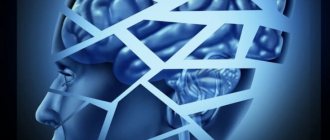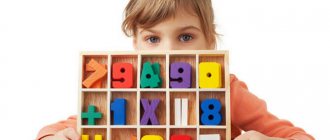Dysarthria in children is a severe impairment of the pronunciation side of speech due to damage to the speech motor system.
Such a defect threatens the child with auditory perception disorder. The result is an inability to perceive information in full, problems with understanding the world around us, and maladjustment. In this case, great responsibility falls on the relatives of the little patient. Timely treatment will help restore the functioning of the speech organs, allow for correct pronunciation, and correction of all aspects of speech function.
Dysarthria in children.
Dysarthria in children is one of the types of speech disorders that occurs due to damage to the central nervous system. The most obvious disorders of this disease are changes in intonation, tempo and rhythm of speech, as well as a violation of voice formation and a disorder of articulation of sounds.
Children who suffer from dysarthria have great difficulty chewing and swallowing. They sometimes have difficulty buttoning clothes, hopping on one leg, or cutting with scissors. It is also difficult for them to write, so they study in specialized schools. Very often there are contradictions between neurologists and speech therapists regarding dysarthria. If a neurologist does not see obvious disturbances in the function of the cranial nerves, he cannot call the speech disorder dysarthria. This question is almost a stumbling block between neurologists and speech therapists. This is due to the fact that a neurologist, after making a diagnosis of dysarthria, is obliged to carry out serious therapy for the treatment of brainstem disorders, although such disorders (excluding dysarthria) do not seem to be noticeable. The medulla oblongata, as well as the cervical spinal cord, often experiences hypoxia during childbirth. This leads to a sharp decrease in motor units in the nerve nuclei responsible for articulation. During a neurological examination, the child adequately performs all tests, but cannot cope properly with articulation, because it is necessary to perform complex and fast movements that are beyond the strength of weakened muscles.
Sequence of treatment measures
If you believe that the treatment of dysarthria comes down to visits to a speech therapist, where the dysarthric person is taught to form a tube with his lips, then your opinion is wrong. There is a certain sequence of events, which is not recommended to be violated.
Elimination of dysarthria begins with restoration of the speech-motor system. To do this, the baby is given a speech therapy massage to develop fine motor skills. Breathing exercises are also used.
Speech therapy massage is one of the most effective methods of restoring the functioning of the speech apparatus. Massage affects the muscles, allowing them to normalize their tone. Therefore, the specialist first determines its level: hypo- or hypertonicity.
Speech therapy massage is divided into several types:
- manual;
- mechanical;
- hardware.
The manual technique is based on the impact of fingers on certain areas of the cheeks, lips, and tongue. The specialist carries out stroking and slight kneading of the muscle frame of the lips, cheeks and chin. Connects lips with fingers in vertical and horizontal positions. Massages the soft palate.
Mechanical technique involves influencing problem areas using special probes.
The hardware method uses vacuum, vibration, and temperature devices. It allows you to restore the nerve pathways connecting muscles with centers in the brain.
Dysarthric children are able to independently massage at home. simple exercises for this :
- baring teeth;
- lip stretching;
- open - close your mouth;
- the child puts a candy on a stick in his mouth, the adult takes it out. The smaller the volume of candy, the more difficult it is to do the exercise.
Massage allows you to:
- restore normal muscle tone;
- eliminate pathological movements of speech muscles;
- increase the amplitude of articulatory actions;
- makes muscles work that were not previously involved in the process;
- coordinates the movement of speech organs.
Causes of dysarthria
1. Organic damage to the central nervous system as a result of the influence of various unfavorable factors on the developing brain of a child in the prenatal and early periods of development. Most often, these are intrauterine lesions that are the result of acute, chronic infections, oxygen deficiency (hypoxia), intoxication, toxicosis of pregnancy and a number of other factors that create conditions for the occurrence of birth trauma. In a significant number of such cases, asphyxia occurs during childbirth and the child is born premature. 2. The cause of dysarthria may be Rh factor incompatibility. 3. Dysarthria occurs somewhat less frequently under the influence of infectious diseases of the nervous system in the first years of a child’s life. Dysarthria is often observed in children suffering from cerebral palsy (CP). According to E.M. Mastyukova, dysarthria with cerebral palsy manifests itself in 65-85% of cases. Classification of clinical forms of dysarthria Classification of clinical forms of dysarthria is based on identifying different locations of brain damage. Children with various forms of dysarthria differ from each other in specific defects in sound pronunciation, voice, and articulatory motor skills, require different speech therapy techniques and can be corrected to varying degrees.
Forms of dysarthria
Prevention
Preventive measures involve preventing the development of pathological processes that impair speech abilities. To avoid the occurrence of illness, it is recommended:
- Treat abscesses, infectious diseases and other pathologies in a timely manner.
- Avoid traumatic brain and spinal injuries and severe stress that disrupts the functioning of the nervous system.
- When working with harmful substances, observe safety precautions so that toxic vapors do not enter the body.
- Strengthen the body with vitamin complexes (in consultation with your doctor). This will help avoid oxygen starvation and cerebral circulation disorders.
- Regularly monitor blood pressure levels to prevent circulatory and vascular system disorders.
Bulbar dysarthria
Bulbar dysarthria (from the Latin bulbus - a bulb, the shape of which is the medulla oblongata) occurs when there is a disease (inflammation) or tumor of the medulla oblongata. In this case, the nuclei of the motor cranial nerves located there (glossopharyngeal, vagus and sublingual, sometimes trigeminal and facial) are destroyed. Characteristic is paralysis or paresis of the muscles of the pharynx, larynx, tongue, and soft palate. A child with a similar defect has difficulty swallowing solid and liquid food and has difficulty chewing. Insufficient mobility of the vocal folds and soft palate leads to specific voice disorders: it becomes weak and nasal. Voiced sounds are not realized in speech. Paresis of the muscles of the soft palate leads to the free passage of exhaled air through the nose, and all sounds acquire a pronounced nasal (nasal) tone. In children with the described form of dysarthria, atrophy of the muscles of the tongue and pharynx is observed, and muscle tone also decreases (atonia). The paretic state of the tongue muscles causes numerous distortions in sound pronunciation. Speech is slurred, extremely unclear, slow. The face of a child with tabloid dysarthria is amicable.
Subcortical dysarthria
Subcortical dysarthria occurs when the subcortical nodes of the brain are damaged. A characteristic manifestation of subcortical dysarthria is a violation of muscle tone and the presence of hyperkinesis. Hyperkinesis is violent involuntary movements (in this case in the area of articulatory and facial muscles) that are not controlled by the child. These movements can be observed at rest, but usually intensify during speech. The changing nature of muscle tone (from normal to increased) and the presence of hyperkinesis cause peculiar disturbances in phonation and articulation. A child can correctly pronounce individual sounds, words, short phrases (especially in a game, in a conversation with loved ones or in a state of emotional comfort) and after a moment he is unable to utter a single sound. An articulatory spasm occurs, the tongue becomes tense, and the voice is interrupted. Sometimes involuntary screams are observed, and guttural (pharyngeal) sounds “break through.” Children may pronounce words and phrases excessively quickly or, conversely, monotonously, with long pauses between words. Speech intelligibility suffers due to unsmooth switching of articulatory movements when pronouncing sounds, as well as due to disturbances in the timbre and strength of the voice. A characteristic sign of subcortical dysarthria is a violation of the prosodic aspect of speech - tempo, rhythm and intonation. The combination of impaired articulatory motor skills with disorders of voice formation and speech breathing leads to specific defects in the sound aspect of speech, which manifest themselves variably depending on the child’s condition, and are reflected mainly in the communicative function of speech. Sometimes with subcortical dysarthria in children, hearing loss is observed, complicating a speech defect.
Development of fine motor skills
It would seem, what is the connection between correct speech and finger movement? It turns out that the center of speech and finger motor skills are located nearby in the brain, stimulating each other’s work. The better developed fine motor skills, the better and faster the development of speech.
Digging a little from the topic, I would like to simultaneously explain to parents that movement in general helps strengthen neural connections that allow you to remember new information. A sedentary child is difficult to teach.
Developing motor activity of the fingers allows you to enrich your vocabulary and improve the phonemic aspect of speech. There are many options for developing fine motor skills: modeling from plasticine; working with paper (sheets can be crumpled, torn, pieces plucked off, folded in a certain sequence); designing crafts, creating applications, collages will also develop creative thinking.
Specialists use finger gymnastics, special attributes to stimulate motor activity of the finger in:
- Pinch your earlobe between your thumb and index finger. Walk along the edge of the ear with massage movements;
- spread your fingers wide. Clap your palms until all fingers touch;
- bend your fingers. Using massaging movements, move from the ear to the crown;
- A child ties knots on a rope. Then he runs them over with his fingers;
- the use of various balls - corrugated, with spikes, stuffed with balls. Squeezing/unsqueezing them with your hands;
- use of expanders;
- clothespins, computer keyboards, phones with buttons.
There are many devices, specialized and household, that allow you to work on the development of fine motor skills. A specialist will tell parents about possible options and explain how to conduct classes independently at home.
Cortical dysarthria
Cortical dysarthria is very difficult to isolate and recognize. With this form, voluntary motor skills of the articulatory apparatus are impaired. In its manifestations in the sphere of sound pronunciation, cortical dysarthria resembles motor alalia, since, first of all, the pronunciation of words with a complex sound-syllable structure is impaired. In children, the dynamics of switching from one sound to another, from one articulatory posture to another, is difficult. Children are able to clearly pronounce isolated sounds, but in the speech stream the sounds are distorted and substitutions occur. Combinations of consonant sounds are especially difficult. At an accelerated pace, hesitations appear, reminiscent of stuttering. However, unlike children with motor alalia, children with this form of dysarthria do not experience disturbances in the development of the lexico-grammatical aspect of speech. Cortical dysarthria should also be distinguished from dyslalia. Children have difficulty reproducing articulatory posture, and it is difficult for them to move from one sound to another. During correction, attention is drawn to the fact that defective sounds are quickly corrected in isolated utterances, but are difficult to automate in speech.
Pseudobulbar dysarthria
Pseudobulbar dysarthria is the most common form of childhood dysarthria. Pseudobulbar dysarthria is a consequence of organic brain damage suffered in early childhood, during childbirth or in the prenatal period as a result of encephalitis, birth injuries, tumors, intoxication, etc. The child experiences pseudobulbar paralysis or paresis caused by damage to the pathways coming from the cerebral cortex to the nuclei of the glossopharyngeal, vagus and hypoglossal nerves. According to the clinical manifestations of disorders in the area of facial and articulatory muscles, it is close to bulbar. However, the possibilities of correction and full mastery of the sound-pronunciation side of speech with pseudobulbar dysarthria are much higher. As a result of pseudobulbar palsy, the child's general and speech motor skills are impaired. The baby sucks poorly, chokes, chokes, and swallows poorly. Saliva flows from the mouth, facial muscles are disturbed. The degree of impairment of speech or articulatory motor skills may vary. Conventionally, there are three degrees of pseudobulbar dysarthria: mild, moderate, severe. 1. A mild degree of pseudobulbar dysarthria is characterized by the absence of gross disturbances in the motor skills of the articulatory apparatus. Articulation difficulties lie in slow, insufficiently precise movements of the tongue and lips. Disorders of chewing and swallowing are revealed faintly, with occasional choking. The pronunciation of such children is impaired due to insufficiently clear articulatory motor skills, speech is somewhat slow, and blurring is typical when pronouncing sounds. More often, the pronunciation of sounds that are difficult to articulate suffers: zh, sh, r, ts, ch. Voiced sounds are pronounced with insufficient participation of the voice. Soft sounds are difficult to pronounce and require adding to the main articulation the raising of the middle part of the back of the tongue to the hard palate. Pronunciation deficiencies have an adverse effect on phonemic development. Most children with mild dysarthria experience some difficulty in auditory processing. When writing, they encounter specific errors in replacing sounds (t-d, t-ts, etc.). There is almost no violation of the structure of the word: the same applies to grammatical structure and vocabulary. Some uniqueness can only be revealed through a very careful examination of children, and it is not typical. So, the main defect in children suffering from mild pseudobulbar dysarthria is a violation of the phonetic aspect of speech. Children with a similar disorder, who have normal hearing and good mental development, attend speech therapy classes at the regional children's clinic, and at school age - a speech therapy center at a comprehensive school. Parents can play a significant role in eliminating this defect. 2. Children with moderate dysarthria make up the largest group. They are characterized by amicity: lack of movement of the facial muscles. The child cannot puff out his cheeks, stretch out his lips, or close them tightly. Tongue movements are limited. The child cannot lift the tip of his tongue up, turn it to the right, left, or hold it in this position. Switching from one movement to another is a significant difficulty. The soft palate is often inactive, and the voice has a nasal tone. Characterized by profuse salivation. The acts of chewing and swallowing are difficult. The consequence of dysfunction of the articulatory apparatus is a severe pronunciation defect. The speech of such children is usually very slurred, slurred, and quiet. The articulation of vowels, usually pronounced with a strong nasal exhalation, is characteristic due to the inactivity of the lips and tongue. The sounds “a” and “u” are not clear enough, the sounds “i” and “s” are usually mixed. Of the consonants, p, t, m, n, k, x are most often preserved. The sounds ch and ts, r and l are pronounced approximately, like a nasal exhalation with an unpleasant “squelching” sound. The exhaled mouth stream is felt very weakly. More often, voiced consonants are replaced by voiceless ones. Often sounds at the end of words and in combinations of consonants are omitted. As a result, the speech of children suffering from pseudobulbar dysarthria is so incomprehensible that they prefer to remain silent. Along with the usually late development of speech (at the age of 5-6 years), this circumstance sharply limits the child’s experience of verbal communication. Children with such a disorder cannot study successfully in a comprehensive school. The most favorable conditions for their education and upbringing are created in special schools for children with severe speech impairments, where these students receive an individual approach. 3. A severe degree of pseudobulbar dysarthria - anarthria - is characterized by deep muscle damage and complete inactivity of the speech apparatus. The face of a child suffering from anarthria is mask-like, the lower jaw droops, and the mouth is constantly open. The tongue lies motionless on the floor of the oral cavity, lip movements are sharply limited. The acts of chewing and swallowing are difficult. Speech is completely absent, sometimes there are individual inarticulate sounds. Children with anarthria with good mental development can also study in special schools for children with severe speech impairments, where, thanks to special speech therapy methods, they successfully master writing skills and a curriculum in general education subjects. A characteristic feature of all children with pseudobulbar dysarthria is that with distorted pronunciation of the sounds that make up a word, they usually retain the rhythmic contour of the word, i.e., the number of syllables and stress. As a rule, they know the pronunciation of two- and three-syllable words; four-syllable words are often reproduced reflectively. It is difficult for a child to pronounce consonant clusters: in this case, one consonant is dropped (squirrel - “beka”) or both (snake - “iya”). Due to the motor difficulty of switching from one syllable to another, there are cases of likening syllables (dishes - “posyusya”, scissors - “noses”). Impaired motor skills of the articulatory apparatus leads to improper development of the perception of speech sounds. Deviations in auditory perception caused by insufficient articulatory experience and the lack of a clear kinesthetic image of sound lead to noticeable difficulties in mastering sound analysis. Depending on the degree of speech motor impairment, variously expressed difficulties in sound analysis are observed. Most special tests that reveal the level of sound analysis are not available to dysarthric children. They cannot correctly select pictures whose names begin with a given sound, come up with a word containing a certain sound, or analyze the sound composition of a word. For example, a twelve-year-old child who has studied for three years in a public school, answering the question what sounds in the words of the regiment, cat, names p, a, k, a; k, a, t, a. When completing the task of selecting pictures whose names contain the sound b, the boy puts aside a jar, a drum, a pillow, a scarf, a saw, and a squirrel. Children with better preserved pronunciation make fewer mistakes; for example, they select the following pictures based on the sound “s”: bag, wasp, plane, ball. For children suffering from anarthria, such forms of sound analysis are not available.
Forecast
The prognosis directly depends on the severity of the disease and how quickly therapeutic measures were started. If you follow all the specialist’s recommendations, complete restoration of speech with erased dysarthria is possible, but treatment requires a serious approach. You should not miss classes with a speech therapist or take prescribed medications.
Severe forms of pathology, unfortunately, in almost all cases leave consequences, but they can be minimal if the right treatment is selected. For children with severe speech disorders there are special kindergartens with speech therapy rooms and consultations with highly specialized specialists (neurologist, psychologist, massage therapist).
If the pathology is congenital, it is necessary to take all measures to prevent the progression of dysarthria - avoid injuries, visit a speech therapist, and avoid contact with aggressive substances that can lead to severe intoxication.
Note. It is easier to prevent a disease than to eliminate its negative consequences later. Therefore, measures to prevent dysarthria have an important role in a person’s life.
Treatment of dysarthria
Due to the fact that dysarthria is not an independent disease and can be observed with various manifestations of nervous system disorders, the content and order of all treatment measures will be established after the doctor makes a clinical diagnosis, taking into account the age and condition of the child. Treatment of dysarthria in children is carried out comprehensively. Depending on the stage of the disease, the following measures are used: speech therapy correction; drug treatment; massage; breathing exercises; Exercise therapy. Medicines are prescribed by a neuropsychiatrist. There are no drugs for the disease as such. The doctor prescribes medications that only remove the symptoms of the disease and alleviate the general condition of the patient.










